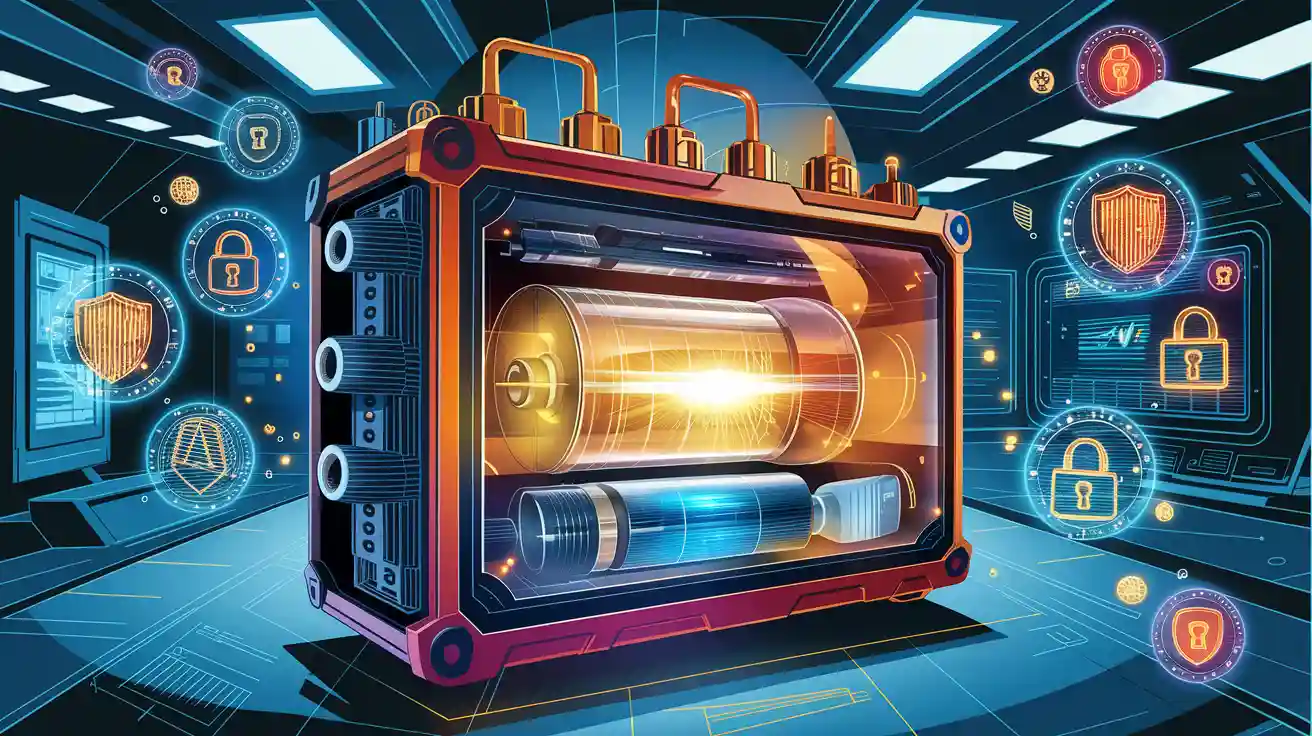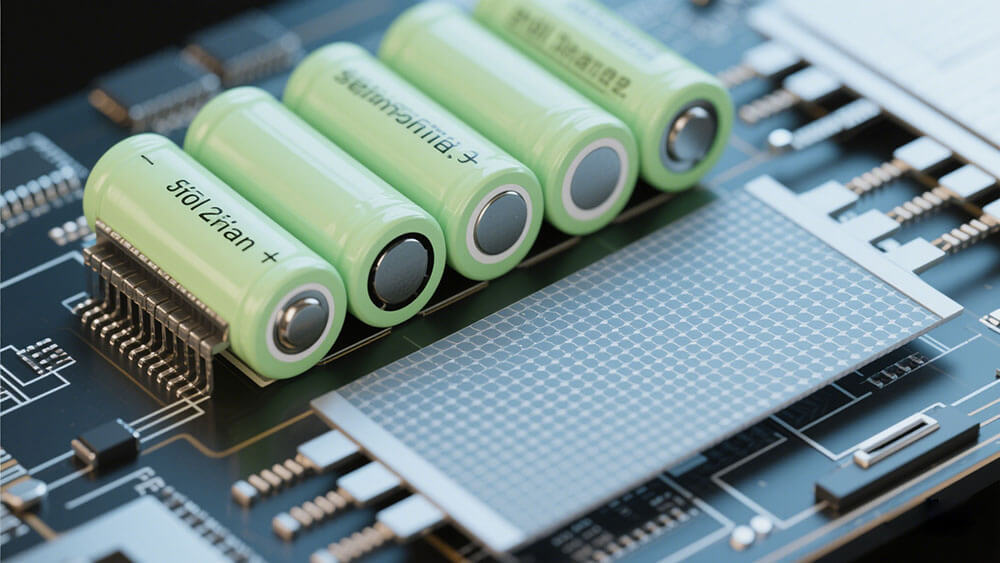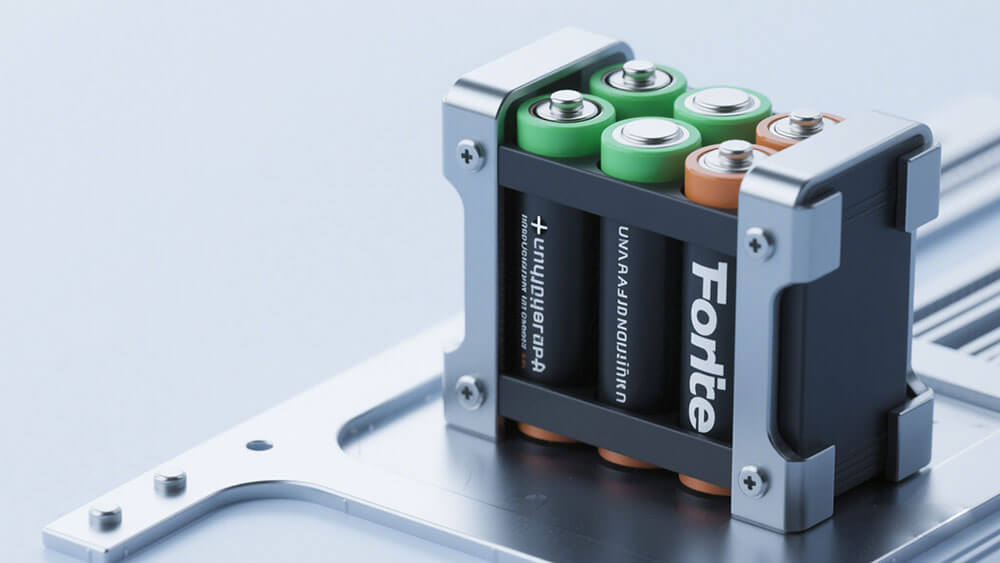Contents

Safety Reinforced Layers (SRL) about Lithium Battery represent a groundbreaking safety feature in lithium-ion batteries. These temperature-sensitive layers actively mitigate thermal runaway risks by responding to abnormal conditions, such as overheating. Recent tests reveal their effectiveness, reducing explosion rates in impact scenarios by 53%. With the lithium-ion battery market growing at over 30% annually, Safety Reinforced Layers (SRL) about Lithium Battery ensure safer and more reliable energy solutions for 2025.
Key Takeaways
Safety Reinforced Layers (SRL) lower the chance of battery fires. This makes lithium-ion batteries safer for things like electric cars.
SRL works by reacting to heat changes. It stops electricity flow if the battery gets too hot. This prevents explosions and makes batteries more reliable.
Adding SRL to batteries makes them safer without losing power. This keeps devices and renewable energy systems working well.

Part 1: Why Safety Reinforced Layers (SRL) Are Essential for Li-ion Batteries
1.1 Understanding Thermal Runaway Risks in Lithium Batteries
Thermal runaway represents one of the most critical safety concerns in lithium-ion batteries. When a single cell fails due to overheating, it can trigger a chain reaction, spreading heat and pressure to adjacent cells. This phenomenon often leads to catastrophic outcomes, including fires or explosions. You may recall incidents like the Samsung Galaxy Note 7 recall, where faulty separators caused battery fires, highlighting the dangers of thermal runaway.
The risks increase in high-demand applications such as electric vehicles, robotics, and industrial systems, where batteries operate under extreme conditions. Factors like excessive vibration, improper handling, or exposure to high temperatures exacerbate these risks. To address these challenges, manufacturers have turned to innovative solutions like Safety Reinforced Layers (SRL), which actively mitigate thermal runaway by responding to abnormal temperature changes.
Note: Lithium-ion batteries are safe when used as intended, but non-certified batteries and manufacturing defects remain significant contributors to heat-related failures.
1.2 Common Safety Challenges in Li-ion Battery Packs
Lithium-ion battery packs face several safety challenges that compromise their reliability and performance. These challenges include:
Safety Challenge | Description |
|---|---|
Thermal Runaway | High heat from a failing cell can propagate to neighboring cells, causing a chain reaction. |
Fire Risks | Lithium-metal batteries can exacerbate fires; specific extinguishing methods are required. |
Manufacturing Defects | Issues like faulty separators can lead to fires; notable incidents include the Samsung Galaxy Note 7. |
Environmental Factors | Improper handling, excessive vibration, and high temperatures can compromise battery safety. |
Non-Certified Batteries | Many heat and fire failures reported in consumer products using non-certified batteries. |
Correct Usage | Quality lithium-ion batteries are safe when used as intended, with rare heat-related failures. |
These challenges highlight the need for advanced safety mechanisms. SRL technology addresses these issues by integrating temperature-sensitive materials that prevent overheating and thermal runaway.
1.3 The Role of Safety Reinforced Layers in Addressing Safety Concerns
Safety Reinforced Layers (SRL) about lithium battery technology offer a proactive solution to mitigate safety concerns. These layers consist of advanced materials like aerogels and phase change materials (PCMs), which suppress temperature rise and delay thermal runaway onset. For example:
Aerogels delay thermal runaway significantly while reducing harmful gas emissions like CO.
PCMs absorb heat, lowering peak temperatures and minimizing combustion risks.
SRL technology also enhances battery reliability by responding to temperature changes in milliseconds. When the battery temperature exceeds safe thresholds, the SRL increases resistance, cutting off current flow and preventing further damage. Unlike traditional safety mechanisms, SRL materials are reversible, allowing the battery to resume normal operation once the temperature stabilizes.
This innovation is particularly valuable in high-risk applications such as medical devices, robotics, and consumer electronics. By integrating SRL into lithium-ion batteries, manufacturers can ensure safer energy solutions without compromising performance or energy density.
Tip: Explore how SRL technology can be customized for your specific application needs. Learn more about custom battery solutions from Large Power.

Part 2: How the Safety Reinforced Layer Works in Lithium Batteries
2.1 Composition and Materials of the Safety Reinforced Layer
The safety reinforcement layer is a sophisticated component designed to enhance the thermal safety of lithium-ion batteries. Its composition combines advanced polymer engineering with functional additives to achieve both high sensitivity and durability. For instance, molecularly engineered polythiophene (PTh) and carbon-based additives are commonly used. These materials exhibit exceptional thermal responsiveness, allowing the layer to act as a dynamic barrier against overheating.
The SRL’s ultra-thin structure, often measuring just 1 micron in thickness, ensures minimal impact on the battery’s energy density. Manufacturers employ roll-to-roll production techniques to scale up SRL fabrication efficiently. This method enables the production of up to 5 kilometers of SRL material daily, making it a cost-effective solution for large-scale battery manufacturing.
Note: The SRL’s ability to maintain high conductivity during normal operation while transitioning to an insulating state during thermal events is a key innovation. This dual functionality ensures both safety and performance in lithium-ion batteries.
2.2 Placement of SRL in Li-ion Battery Packs
The placement of the safety reinforcement layer within a lithium-ion battery pack is critical to its effectiveness. Typically, the SRL is integrated between the cathode and the current collector, such as aluminum foil. This strategic positioning allows the layer to monitor and respond to temperature changes directly at the source of potential thermal runaway.
In multi-cell battery packs, the SRL is applied to individual cells to prevent localized overheating from spreading to adjacent cells. This modular approach enhances the overall safety of the battery pack, particularly in high-demand applications like electric vehicles and industrial systems.
Placement | Function |
|---|---|
Between cathode and collector | Monitors and mitigates temperature spikes at the cell level. |
Across individual cells | Prevents thermal propagation in multi-cell configurations. |
Integrated into pack design | Enhances safety without altering the existing battery architecture. |
This flexible integration ensures compatibility with various lithium-ion battery designs, simplifying the adoption of SRL technology across industries.
2.3 Mechanism of Action: Preventing Thermal Runaway and Ensuring Safety
The safety reinforcement layer operates through a temperature-sensitive mechanism that actively suppresses thermal runaway. When the internal temperature of a lithium-ion battery exceeds 100°C, the SRL’s molecular structure undergoes a rapid transformation. Its electrical resistance increases significantly, effectively halting current flow and preventing further heat generation.
The SRL blocks current overflow, reducing the risk of exothermic reactions.
Impact tests show a reduction in battery explosions from 63% to 10% when using the SRL.
During nail penetration tests, SRL-enhanced batteries recover voltage quickly, unlike non-SRL batteries.
The SRL prevents copper migration during over-discharge, further enhancing safety.
This rapid response mechanism not only prevents catastrophic failures but also allows the battery to resume normal operation once the temperature stabilizes. Unlike traditional safety measures, the SRL’s reversible nature ensures long-term reliability without compromising performance.
Tip: By incorporating the safety reinforcement layer into your battery systems, you can achieve unparalleled thermal runaway suppression and enhance the safety of your products. Explore custom battery solutions.
The SRL’s ability to suppress thermal runaway while maintaining energy density makes it a game-changer for applications in medical devices, robotics, and consumer electronics. Its integration into lithium-ion batteries represents a significant leap forward in battery thermal safety layer technology.

Part 3: Implications of Safety Reinforced Layers for Future Lithium Battery Innovations
3.1 Enhancing Safety Standards in Electric Vehicles
Electric vehicles (EVs) demand high-performance li-ion batteries that can operate safely under extreme conditions. Safety Reinforced Layers (SRL) play a pivotal role in meeting these requirements. By preventing thermal runaway, SRL technology ensures the safety of EV battery packs, even during high-stress scenarios like rapid charging or collisions.
The integration of SRL into li-ion batteries enhances consumer confidence in EVs. Testing has shown that SRL reduces fire risks and limits maximum temperatures during thermal events. This innovation not only protects passengers but also extends the lifespan of EV batteries. As a result, you can expect a surge in EV adoption, driven by improved safety standards.
3.2 Improving Reliability in Consumer Electronics
Consumer electronics rely on compact and efficient li-ion batteries. However, safety concerns like overheating and short circuits often compromise their reliability. SRL technology addresses these issues by acting as a thermal barrier, preventing heat buildup and ensuring stable performance.
For instance, SRL-enhanced li-ion batteries maintain their integrity during stress tests, reducing the likelihood of device malfunctions. This reliability is crucial for applications like smartphones, laptops, and wearable devices. By incorporating SRL, manufacturers can deliver safer and more dependable products to you.
Note: Discover how SRL technology is revolutionizing consumer electronics.
3.3 Supporting Grid Storage and Renewable Energy Systems
The transition to renewable energy depends on efficient and safe energy storage solutions. Li-ion batteries equipped with SRL technology offer a reliable option for grid storage applications. These batteries can handle high energy loads while minimizing thermal risks, making them ideal for supporting renewable energy infrastructure.
SRL technology also enhances the scalability of li-ion batteries for large-scale energy storage. By preventing thermal runaway, SRL ensures the safety and longevity of battery systems used in solar and wind energy projects. This innovation supports the global shift toward sustainable energy solutions.
Call to Action: Learn how SRL can optimize your energy storage systems. Explore custom battery solutions at Large Power.
Safety Reinforced Layers revolutionize battery safety by mitigating thermal runaway risks and preventing internal short circuit events. Their advanced safety management features enhance performance across high-performance applications like electric vehicles and renewable energy systems. By integrating SRL, you can achieve safer, more reliable battery technologies that meet the demands of 2025 and beyond.
FAQ
1. What is thermal runaway, and how does it affect battery safety?
Thermal runaway occurs when a rapidly elevating internal temperature triggers a chain reaction, leading to overheating. This can cause severe thermal runaway issues, including the risk of battery explosions.
2. How does the Safety Reinforced Layer prevent thermal runaway?
The Safety Reinforced Layer detects overheating and increases resistance, halting current flow. This mechanism prevents further heat generation and minimizes the risk of battery explosions.
3. Can the Safety Reinforced Layer be integrated into existing battery designs?
Yes, the Safety Reinforced Layer integrates seamlessly into existing battery designs. Its ultra-thin structure ensures compatibility without compromising energy density or performance.





